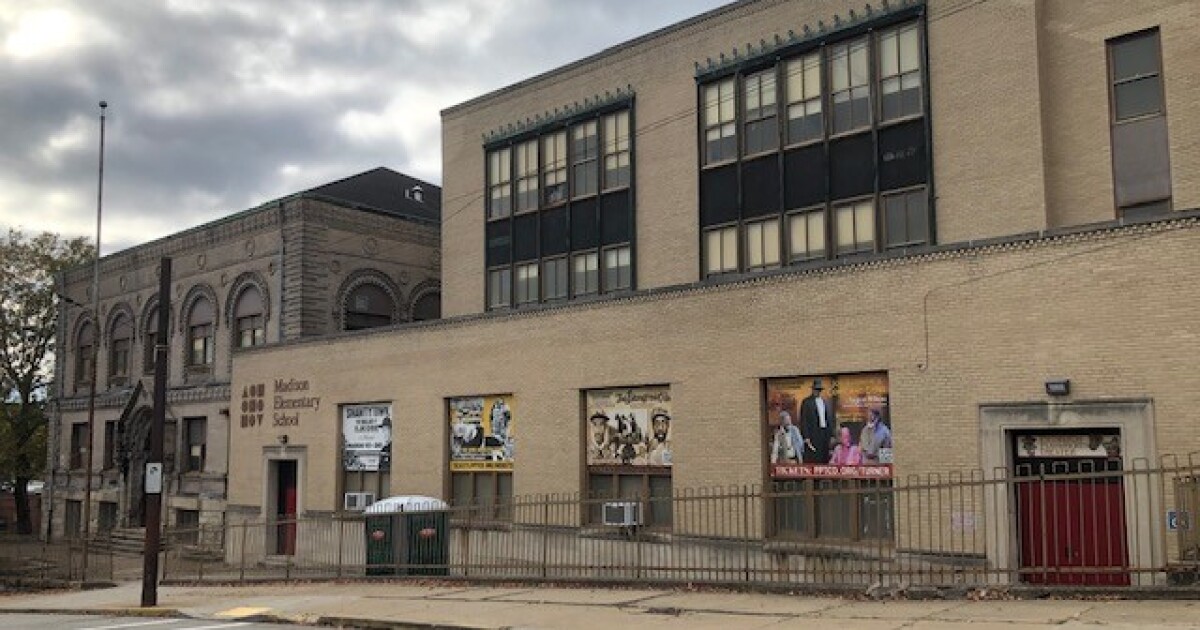“The Bluegrass Mile” is the final show of Pittsburgh Playwrights Theatre Co.’s 20th season. That this new historical drama was written by company founder Mark Clayton Southers is fitting. That the former mill worker’s small, resourceful troupe has lasted for two decades is remarkable. But the production is just the latest step in Playwrights’ new phase: occupancy of the Hill District’s brand-new Madison Arts Center, its first permanent, dedicated home.
Playwrights showcases work by local writers, with specialties in Southers’ plays and those of August Wilson; in 2013, it became the first company anywhere to stage all 10 of Wilson’s famed Century Cycle of plays, several more than once. It’s long been celebrated for achieving a lot with modest resources, and its long-running Theatre Festival in Black & White has done more than most projects in town to bring Black and white theater artists (and audiences) into the same room.
The company’s earliest shows, starting in 2003 with Wilson’s “Ma Rainey’s Black Bottom,” were mounted in a rented, 99-seat space in Garfield. Later, it moved Downtown, occupying Pittsburgh Cultural Trust spaces for about a decade, right through last year.
Now Southers is dreaming bigger. Playwrights’ early seasons were bankrolled by his job as a heavy-equipment operator at U.S. Steel’s Irwin Works. Southers quit some years back to focus on theater and now gets directing gigs around the country. Last year, he cashed in his pension so he and his wife, Neicy Reidie Southers, could purchase the former Madison Elementary School.
Southers, a life-long Hill resident, attended the school himself, and his daughter, Ashley, was in the final graduating class, some 17 years ago. Since February, its old auditorium has been Playwrights’ full-time performance home. Southers envisions the remainder of the sprawling, three-story structure as artists’ studios, classrooms for instruction in theatrical arts from lighting design to fight choreography, and more, including a black-box theater on the second floor.
“We know what the arts have done for us in our lives,” said Southers. He wants the center to do the same for other Hill District residents, for whom he said going Downtown can be a hassle. With Playwrights (and perhaps other groups) programming at Madison, he says, “People can just walk out the door and come see a show.”
He’s also planning to improve accessibility with discounted tickets.
The center joins a growing roster of arts-based revitalization in the neighborhood.
The Hill Dance Academy Theatre’s new home (also a former school building) is just a few blocks away, on Bedford Avenue. A little further away are the arts-themed community center Nafasi, arts-education nonprofit ACH Clear Pathways and, of course, the August Wilson House, an arts center in whose backyard Playwrights has memorably staged sold-out runs of several of Wilson’s plays. And in May, the Hill District Community Development Corporation broke ground on the restoration of the landmark New Granada Theater.
“I think it can all work hand in hand,” says Southers.
The Madison Arts Center does need work. Southers says he is pursuing funding to replace the heating system, and planning a capital campaign to renovate the current lobby as a cabaret space and install an elevator. It’ll all be expensive, but don’t bet against the ever-resourceful Southers, who is surely the only theatrical artistic director in Pittsburgh who runs his own tree-cutting business on the side.
The theater space was formally dedicated Oct. 7. It’s named for Carter Woodson Redwood, a young actor who also attended Madison Elementary and got his start on stage with Playwrights before going on to star in the CBS TV series “FBI: International.”
That same night, the newly named 99-seat space hosted the debut performance of “The Bluegrass Mile,” the latest in Southers’ series of plays depicting Black American life in the 1800s. This one’s about jockeys in Kentucky in the 1890s, when whites were threatening to push them out of that field of endeavor.
Just as the play grapples with the ghosts of slavery — which the young jockeys, unlike the play’s two older main characters, never experienced — it echoes strongly into the present day with its depictions of racialized police oppression and threats of dispossession.
Meanwhile, the notes of resilience and community that Southers sounds in his play resonate with the hoped-for future of the building it’s staged in.
“The Bluegrass Mile” continues through Oct. 29. More information is here.
